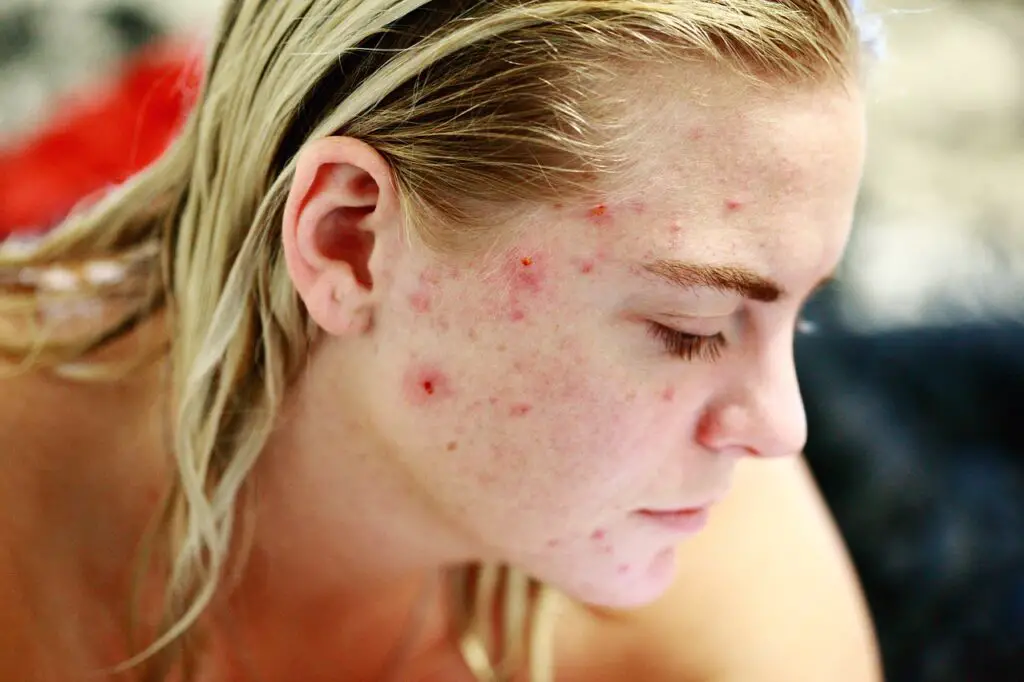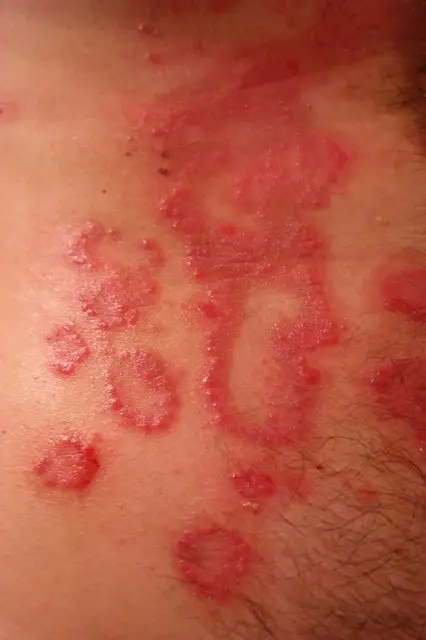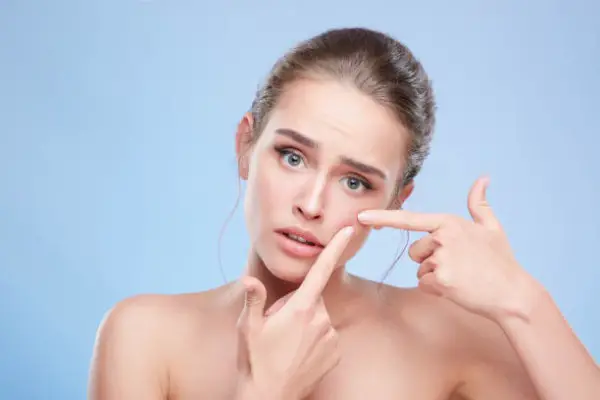When you stop to think that skin is your body’s largest organ, accounting for roughly 16% of your body weight, it should come as no surprise that there are a lot of things that can go wrong with it.
Skin disorders are not limited to modern times. Men, women and children have suffered from various skin conditions probably from the very beginnings of humanity.
Even the Bible makes references to “virulent” skin conditions, and it is no reach to imagine the ancient human beings dealing with this critical but temperamental organ.
Unless your body maintains hormonal and biochemical balance, your skin will go places you don’t want it to go. It will rebel. It will flare up, itch, swell, split, wrinkle, form a mass, overreact to infection and injury, change color, texture, and elasticity.
It will react to what is going on inside the rest of your body (e.g., poor diet, lack of rest, illness…), and what is going on in your head too (e.g., stress, tension, anxiety…). Skin is very often a good indicator of how healthy you are on the inside.
Heredity may be a factor in the emergence of certain types of skin conditions, such as moles and skin tags, And though most of these are not considered dangerous, they should be monitored carefully as in some instances they can become infected or even cancerous.
What is your Skin Disorder?
Thousands have been described. In 1572, Geronimo Mercuriali wrote what is considered the first scientific work in the field of dermatology, “On the Diseases of the Skin.”
The vast majority of these conditions are quite rare, affecting small numbers of people. However, there are common skin disorders that affect millions throughout the world.
This waterproof barrier we call skin is our armor against infection and all types of environmental hazards. It’s what keeps the outside out and the inside in. It is also, in some ways, the banner of who we are to others.
Clearly, if you practice good skin care, your skin will both protect you and help you project an attractive, vital and healthy image of who you are.
Learn about them and how to prevent, treat, or rid yourself of these disorders. Enjoy better skin and quality of life starting today!
Typical Skin Disorders
Moles

Also called “beauty marks” (though the days of Louis XIV and Marie Antoinette are long past), or nævus (singular, pronounced nee-vus). These marks occur when melanocytes (cells responsible for the synthesis of melanins, which produce skin color) accumulate in a mass.
Though benign, moles should be monitored for changes in size, shape, and color, which can result from too much exposure to sun and can develop into malignant melanomas.
Warts
Small, hard, virus-induced bumps that can appear anywhere on the body, mouth, genital and rectal areas but most commonly appear on arms, hands, fingers, and feet.
These skin disorders are caused by the human papillomavirus (HPV) viruses and, as such, can be passed from one person to another by close physical contact.
Most warts are painless, but some, depending on where they appear, can cause great discomfort and can even become extremely painful. Some plantar warts, which appear on the soles of the feet, are an example.
Skin Tags
These common, tiny, benign tumors look like small, raised bits of extra skin.
They are actually a composition of fat cells, nerve cells, fibers and ducts covered by epidermis (skin) that can often be found in places where skin creases, such as the armpit, neck, groin, eyelids, and beneath the breasts.
Though normally harmless, skin tags can become painful and sore from friction, tearing, or shaving. There are a number of ways to remove skin tags to improve comfort and appearance.
Wrinkles
The natural aging process causes your skin to thin, dry and become less elastic, leading to the development of creases and lines, or wrinkles.
Ultraviolet rays from the sun can damage the collagen and elastin your body produces to keep your skin firm, smooth, and supple. Cigarette smoke contains toxins that reduce the amount of new collagen your skin produces.
Though some wrinkles are unavoidable, their number and appearance can be reduced substantially by practicing good skin care.
Skin Rash (Atopic Dermatitis)
A chronic skin condition characterized by red, dry and itchy skin in the form of a rash. The rash can swell and become painful and sore, especially if scratched, and may even leak clear fluid which can crust over and form scales.
Skin on skin areas are commonly affected: behind the knees, elbow creases, armpits, and buttocks. The condition is inherited and is not contagious. Atopic dermatitis can be treated and controlled.
Age Spots (Actinic Keratosis or Solar Keratosis)
Also known as sun spots or liver spots. These scaly, dry, rough patches or bumps are often better recognized by their texture than by their appearance, as they can range in size from tiny to over an inch across and can be light or dark, reddish or pink, or a combination of these.
Keratosis appear most frequently on skin that has been exposed to the sun over a long period of time, especially the face, neck, forearms, and backs of hands.
Some may disappear after prolonged avoidance of the sun, but continued exposure may lead others to become cancerous. Their incidence can be reduced by taking measures to protect oneself against the sun. Several treatments are available to have them removed.
Pressure Sores
Extended lying or sitting in one position causes blood supply to the tissue and skin in that area to diminish, sometimes leading to injury in the form of bedsores, pressure ulcers, or decubitus ulcers.
Areas of the body most susceptible are those with little fat for padding near bones, such as heels, hips, base of the spine, shoulder blades, and back.
Mild damage can lead to skin discoloration and a warming sensation in the affected area. More serious sores can penetrate deep into muscle and even bone.
Untreated sores can become infected and painful and limit mobility in certain instances. Common sense precautions and treatments are available to prevent and heal sores.
Acne

A chronic inflammation of the skin, occurring primarily on the face, neck, chest, shoulders and back.
Simply put, acne is the result of too much oil (sebum) combining with dead skin cells to clog pores.
Bacteria form in these clogged pores leading to the emergence of reddish pimples, blackheads, pus-filled whiteheads, and lesions.
The condition afflicts teens mainly, but about 5% of middle-aged adults also suffer from some form of acne. Check this post to learn how you can treat your acne instantly.
Dandruff (Seborrheic Dermatitis)
Also known as “cradle cap” in babies. It is characterized by a greasy-looking flaking or scaling of the skin, usually affecting the scalp. It can also occur on the face and chest, as well as the creases of the groin, legs and arms.
The cause is not known but often the condition can be controlled effectively with the use of specialized shampoos.
Eczema
An itchy rash-like skin condition that afflicts up to 15 million Americans.
The skin becomes red and inflamed. An outbreak is often the result of an allergic reaction. It is more common in younger people and children, but afflicts mature adults also.
Eczema has no cure but can be managed. It is not contagious and is most likely an inherited condition.
Psoriasis

This chronic skin condition generally afflicts children and adults up to age 45.
Thick red, scale-like marks appear, resulting from skin cells being mistakenly attacked by white blood cells called T cells. The T cells’ role is to fight disease and infection, but in psoriasis, T cells attack healthy skin cells instead.
The body reacts by producing more skin cells, resulting in swelling and redness. There is no cure for psoriasis but it can be managed. It is not contagious and is most likely an inherited condition.
Rosacea
The skin on the face (forehead, cheeks, nose, chin) becomes very dry and displays a flushing or redness that can come and go for a time before evolving into persistent red bumps.
This skin condition appears mostly in fair-skinned adults between the ages of 30 and 60.
Blood vessels under the skin expand to accommodate too great an increase in blood flow. The reason this happens is unclear. There is no cure for rosacea, but it can be treated and controlled.

